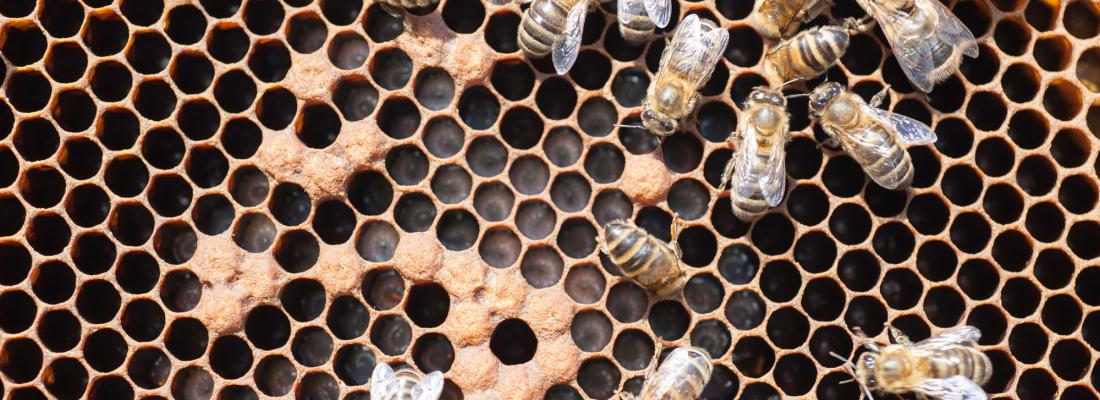Agroecology Reading time 3 min
Hygienic honey bees are more resistant to destructive parasite
Published on 26 January 2021

Varroa destructor is a parasitic mite that affects honeybees. It originated in Asia, but has spread to almost every region of the world. Domestic honey bees, Apis mellifera, are particularly vulnerable to this parasite, which can cause the loss of a colony in just a few months, as well as significant economic losses for beekeepers. Although chemical treatments have existed since the 1980s, they have several drawbacks, including the appearance of parasite resistance, undesirable effects on bees and the presence of residues of substances in honey or royal jelly. Some honey bee colonies have been able to survive the mite without any treatment, thus showing resistance ability to Varroa destructor. The parasite reproduces by lodging in the brood cells of the hive, where bee larvae and pupae grow. By analysing their behaviour, researchers discovered that some bees are capable of detecting the parasite in the cells where it is present. These bees—called hygienic—open the contaminated cells to clean them, sacrificing the developing pupae but controlling the spread of the parasite and preserving the colony. But, how can they detect the parasite hidden in the cells?
To answer this question, researchers analysed and compared both infested and non-infested cells. They were able to identify six specific molecules in the infested cells that had never been identified in honey bees. They synthesised1 these molecules and carried out several behavioural tests in order to know if the mixture of these molecules could trigger hygienic behaviour in the bees.
The team began by comparing the behaviour of bees faced with parasitized cells to those faced with cells that had been injected with a compound. In both cases, they observed a positive response from the bees—cleaning the cells. Researchers also studied the behaviour of different colonies with different levels of hygienic behaviour prompted by varroa. In colonies with high levels of hygiene, the bees identify and clean brood cells containing sick or dead larvae, which is not systematically done in colonies with a moderate level of hygiene, or at least, not to the same extent. The results show that the most hygienic colonies have a strong reaction towards brood cells containing the compounds. Within a colony, bees have different tasks and functions and only some of them exhibit the hygienic behaviour. In a last test, the researchers compared the response of hygienic and non-hygienic bees to the mixture of molecules. The results? All bees are capable of detecting the molecules in their antennae; however, only hygienic bees are able to integrate the information into the central level of the brain and, consequently, adopt a hygienic behaviour—cleaning the contaminated cells.
The discovery of the compound of molecules specific to Varroa destructor-infested brood cells opens up new perspectives for beekeepers in the fight against this pest. This would enable them to identify and select the colonies that might be more resistant to the parasite by studying their reaction to the compound of molecules. INRAE and the University of Otago have filed a patent on these molecules and their applications. Research is currently underway to develop reliable tests that can be used by beekeepers in order to select Varroa destructor-resistant colonies.
1 Analysing and reproducing the identified molecules in the laboratory
|
Reference Fanny Mondet, Solene Blanchard, Nicolas Barthes, Dominique Beslay, Celia Bordier, Guy Costagliola, Maxime R Hervé, Benoit Lapeyre, Seo Hyun Kim, Benjamin Basso, Alison R Mercer and Yves Le Conte, Chemical detection triggers honey bee defence against a destructive parasitic threat, Nature Chemical Biology (2021). https://doi.org/10.1038/s41589-020-00720-3 |
